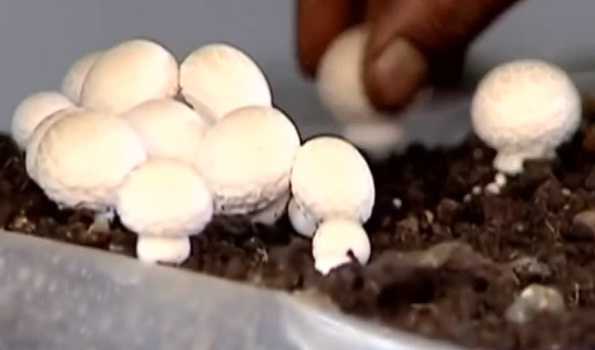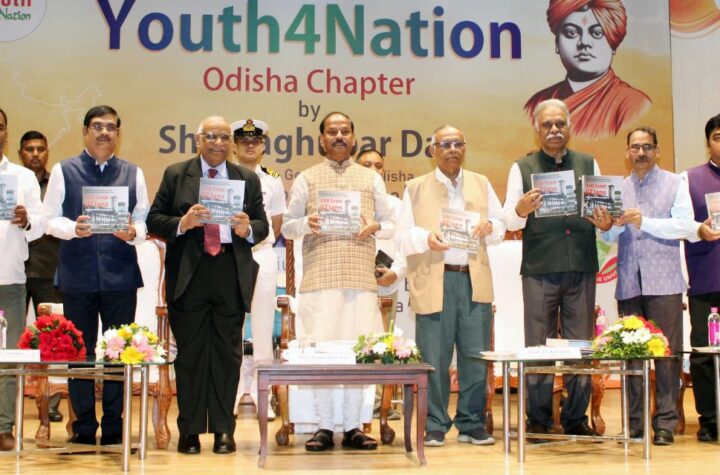Hamirpur (HP) : The HP government has started steps on war footing to make Himachal Pradesh a hub of mushroom cultivation, officials said on Wednesday.
A mushroom or toadstool is the fleshy, spore-bearing fruiting body of a fungus, typically produced above ground, on soil, or on its food source.
Mushrooms are a rich, low-calorie source of fiber, protein, and antioxidants. They may also mitigate the risk of developing serious health conditions, such as Alzheimer’s, heart disease, cancer, and diabetes. They’re also great sources of Selenium.
Some of the roughly 38,000 mushroom varieties are edible, but others are highly poisonous and are found all over the world. While edible mushrooms lack the bright coloring characteristic of many beneficial foods of plant origin, they’re low in calories, rich in fiber and protein, and contain important nutrients and antioxidant compounds.
Although mushrooms are classified as vegetables, technically they are not plants but part of the kingdom called fungi. … Mushrooms provide the B vitamins riboflavin and niacin, which are especially important for people who don’t eat meat. Most mushrooms are also a good source of selenium and potassium.
Pleurotus mushrooms are cultivated worldwide. China is the major producer. Several species can be grown on the carbonaceous matter such as straw or newspaper. In the wild, they are usually found growing on wood.
What we typically think of as a mushroom is the fleshy, fruiting, spore-bearing body of a fungus. The mushrooms we eat are generally composed of a stipe (stem), a pileus (cap), and lamellae (gills). There are, however, many morphological varieties of mushrooms and not all varieties have these features.
Presently, the work on five mushroom projects is going on in Himachal Pradesh. In such a situation, now there is a plan to set up seven new mushroom centers. These new mushroom centers will be set up in those districts, where much ambitious Shiva Project is not applicable.
To promote horticulture in low-lying areas, the government has started the Shiva Project. At the same time, in the upper districts where the Shiva Project is not implemented, these new mushroom centers will be opened by the government on its own through the Horticulture department.
A spokesman of the HP government told UNI that a proposal has been sent to the central government for setting up more mushroom centers in the state and in such a situation, if this proposal is approved by the Center, then work will start for setting up seven new mushroom centers in Himachal Pradesh.
He said that if the proposal became a reality, in these centers, information and training will also be given on modern techniques of mushroom growing.
With the opening of these seven new centers, there is a possibility of an increase in mushroom production in the state.
At present, five projects have been started for mushroom production. One of these projects is being implemented in the Solan district. At the same time, one project is being implemented in Rampur in Shimla district, Baijnath and Palampur in Kangra district, and one project in Kullu district.
Presently two varieties of mushrooms are grown in Himachal Pradesh. One variety is Dhingri mushroom and the other variety is White button mushroom.
In India, white button mushroom was cultivated earlier in places with low temperature, but nowadays by the adoption of new technologies, it is being cultivated in other places as well.
The promotion of white button mushroom cultivation is being given a lot of encouragement by the government.
The S-11 TM-79 and Host U-3 strains of white button mushroom are mostly cultivated in India. A temperature of 22.26 °C is required for the spread of the fungal web of a button mushroom. At this temperature, the fungal trap spreads very rapidly. Afterward, the temperature of 14.18 ° C remains suitable for this. It can be easily grown in well-ventilated rooms, sheds, huts, or huts. Dhingri Oyster mushrooms can be cultivated throughout the year.
For this, the optimum temperature is 20.30 degrees centigrade and the relative humidity is 70.90 percent. Wheat and paddy straw and grains are used to grow oyster mushrooms. This mushroom becomes ready in 2.5 to three months.
He said that in Solan district, work on mushroom production and research was going on since the 60s. Hence it has also got the status of the Mushroom City of India.
The country’s only Directorate of Mushroom Research is also located in Solan and through that work will be undertaken to train farmers by conducting research on new technology and new varieties in its production.











More Stories
CM Files Nomination for Hinjili Assembly Seat
Liquors Policy Scam: ED has no material necessitating my arrest, Kejriwal tells SC
Youth need encouragement & guidance to take India a great heights: Odisha Governor